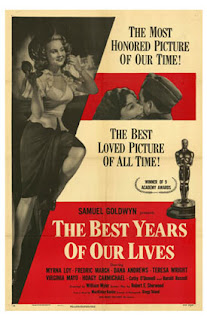
!Paparazzo!
Even 49 years after the original release, this timeless classic still captivates you with its style and elegance. After all, we are talking about a 3 hour long film! La Dolce Vita tells the story of the charming journalist Marcello, who has been seduced by the enthralling life the elite circles of Rome offer. At night he is the well known glamourous reporter, who every woman wants to be with. But in the morning, Marcello has to come back to his nagging girlfriend Emma, associated mainly with domestic work and other such the mundane activities.
He is struggling to come in terms with his life, on one hand enjoying the benefits of his job and hoping it will help him further to become a serious writer, and the on the other hand searching for the best formula for happiness. Even though Marcello is often swept away by celebrities and various parties, he is often entusiastic, but yet reserved. As if he is quietly observing the life of the rich and beautiful, contrasting it with his own.
The film opens with Marcello's everynight occupation. He is trying to spot the hottest gossip on the street and take the best pictures. I love the outdoor restaurant scenes, taking you into a life that has just begun. The type of characters that Fellini uses usually wake up at night. Back to the scene, Marcello is in a bar when he spots the gorgeous Maddalena, a heiress who is always in the spotlight. After spending a night with her in a random prostitute's house, Marcello comes home in the morning to find out that his girlfriend has tried to posion herself. It is the first time we see details of his flat, or more like the lack of any. Everything is very plain- white walls, telephone lying on the floor, not much furniture. In fact, the only piece of furniture we see is a double bed. We already know that the character is quite reluctant to spend time at home. It has become just a tedious place to sleep next to a domestic assistant (This is how he refers to Emma later on)
Fellini has carefully constructed Marcello first as bored and reserved, then adventurous and observing, until he finally transforms into a snob that has been engulfed by the guilty pleasures of the 'sweet life'.

It is worth noting the moment he meets Sylvia (Anita Ekberg). She is playing a Hollywood actress visiting Rome with her alcoholic husband. Marcello is fascinated by her charm and energy. The famous sequence in the 'Trevi Fountain' has taken 1 week to film in JANUARY!!! Apparantly, Marcello Mastroiani has been afraid to get into the freezing water, so he had a bottle of vodka. But even that hasn't helped him, because he'd jumped in the water only to fall on his face. They must have had great fun filming that. However, taking in mind that Anita Ekberg is basically promoting the film with all the posters, one would expect to see her for more than 1 hour. It is true they didn't know it would be a massive hit, but still she has been the main figure on the old posters as well.
I pesonally prefer to see more of the other actress playing Maddalena. She had more style and elegance, surrounded by mystery and secrets. I think it would have contributed to the story if Marcello had more encounters with her, before he claimed he wanted to marry her.
Bringing it to an end, I would like to note how great Marcello Mastroiani is in that role, as well as in 81/2! He has somehow defined the classical look of the film director with black sunglasses, that Hollywood has borrowed plenty of times. Almodovar is a big Fellini fan, he often refers to him in his own films. Even though Federico Felini doesn't rely on a script, he has managed to create stunning films.
I'm excited about Nine that is coming out in December, because of it's resemblance with Mastoiani. These days it's very difficult to find stars to play older stars, so no one really fits for Marcello Mastroiani.

'They come for you in the morning in a limousine; they take you to the studio; they stick a pretty girl in your arms... They call that a profession?Come on!'



























.jpg)














